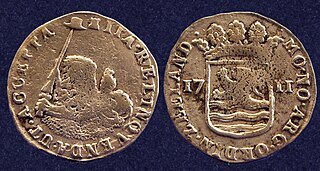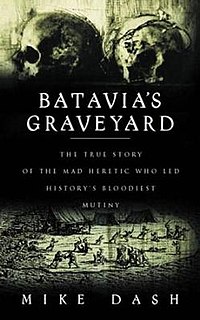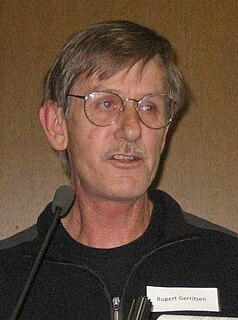Related Research Articles

Abel Janszoon Tasman was a Dutch seafarer, explorer, and merchant, best known for his voyages of 1642 and 1644 in the service of the Dutch East India Company (VOC). He was the first known European explorer to reach New Zealand and the islands of Fiji and Van Diemen's Land.

Batavia was a ship of the Dutch East India Company (VOC). Built in Amsterdam in 1628 as the company's new flagship, she sailed that year on her maiden voyage for Batavia, capital of the Dutch East Indies. On 4 June 1629, Batavia was wrecked on the Houtman Abrolhos, a chain of small islands off the western coast of Australia.

The maritime European exploration of Australia consisted of several waves of European seafarers who sailed the edges of the Australian continent. Dutch navigators were the first Europeans known to have explored and mapped the Australian coastline. The first documented encounter was that of Dutch navigator Willem Janszoon, in 1606. Dutch seafarers also visited the west and north coasts of the continent, as did French explorers.

Zuytdorp also Zuiddorp was an 18th-century trading ship of the Dutch East India Company.

HMS Pandora was a 24-gun Porcupine-class sixth-rate post ship of the Royal Navy launched in May 1779. The vessel is best known for its role in hunting down the Bounty mutineers in 1790. Pandora was partially successful by capturing 14 of the mutineers, but wrecked on the Great Barrier Reef on the return voyage in 1791. HMS Pandora is considered to be one of the most significant shipwrecks in the Southern Hemisphere.
Francisco Pelsaert was a Dutch merchant who worked for the Dutch East India Company best known for his role as the commander of the Batavia. The ship ran aground in the Houtman Abrolhos, off the coastal regions of Western Australia in June 1629, which led to a bloody mutiny orchestrated by Jeronimus Cornelisz.
Jeronimus Cornelisz was a Frisian-Dutch apothecary and Dutch East India Company merchant who sailed aboard the merchant ship Batavia which foundered near Australia. Cornelisz then led one of the bloodiest mutinies in history.

The Zaandam, or Sardam, Saerdam and Saardam, was a 17th-century yacht of the Dutch East India Company. It was a small merchant vessel designed primarily for the inter-island trade in the East Indies.

A castaway is a person who is cast adrift or ashore. While the situation usually happens after a shipwreck, some people voluntarily stay behind on a deserted island, either to evade captors or the world in general. A person may also be left ashore as punishment (marooned).
The Vergulde Draeck, also spelled Vergulde Draak and Vergulde Draek, was a 41.8-metre (137 ft), 260-tonne (290-ton) ship constructed in 1653 by the Dutch East India Company.
The Zeewijk was an 18th-century East Indiaman of the Dutch East India Company that was shipwrecked at the Houtman Abrolhos, off the coast of Western Australia, on 9 June 1727. The survivors built a second ship, the Sloepie, enabling 82 out of the initial crew of 208 to reach their initial destination of Batavia on 30 April 1728. Since the 19th century many objects were found near the wreck site, which are now in the Western Australian Museum. The shipwreck itself was found in 1968 by divers.
Tryall was a British East India Company-owned East Indiaman launched in 1621. She was under the command of John Brooke when she was wrecked on the Tryal Rocks off the north-west coast of Western Australia in 1622. Her crew were the first Englishmen to sight or land on Australia. The wreck is Australia's oldest known shipwreck.

Batavia's Graveyard: The True Story of the Mad Heretic Who Led History's Bloodiest Mutiny is a book released in 2001 by Welsh author Mike Dash about the Dutch East India Company ship Batavia, shipwrecked in 1629 on a small atoll of the Houtman Abrolhos, off the western shore of Australia.
William Hugh Edwards is a Western Australian former journalist, author and marine photographer who has written numerous books on maritime, local and natural history and diving.

Wiebbe Hayes was a Dutch soldier known for his leading role in the suppression of the murderous mutiny led by Jeronimus Cornelisz in 1629, after the merchant ship Batavia was wrecked in the Houtman Abrolhos, a chain of coral islands off the west coast of Australia.

Rupert Gerritsen (RON) was an Australian historian and a noted authority on Indigenous Australian prehistory. Coupled with his work on early Australian cartography, he played an influential part in re-charting Australian history prior to its settlement by the British in 1788, and noted evidence of agriculture and settlements on the continent before the arrival of settlers.
The Australian Netherlands Committee on Old Dutch Shipwrecks (ANCODS) is an organization tasked with maintaining and allocating artefacts from 17th and 18th century Dutch shipwrecks off the coast of Western Australia. It was founded in 1972 by the Agreement between Australia and the Netherlands Concerning Old Dutch Shipwrecks.

Max Cramer OAM was an Australian scuba diver who became famous as the co-discoverer of the wreck of the Batavia on 4 June 1963. He was involved in a number of maritime archaeology projects pertaining to historic shipwrecks in Western Australia.
Wouter Loos was a soldier on board the Dutch East India Company ship Batavia, which sank on Morning Reef in the Wallabi Group of the Houtman Abrolhos Islands off the coast of Western Australia in 1629. Loos had a critical role in the subsequent Batavia Mutiny, becoming the leader of the mutiny after the original leader, Jeronimus Cornelisz (Corneliszoon), was captured.
Beacon Island, also known as Batavia's graveyard, is an island on the eastern side of the Wallabi Group at the northern end of the Houtman Abrolhos, in the Indian Ocean, off the coast of Western Australia.
References
- 1 2 3 "Russell Crowe buys rights to make grisly WA maritime tale into a movie". ABC News. Retrieved 2016-03-30.
- ↑ "Islands of Angry Ghosts, Murder, Mayham and Mutiny". Gould Genealogy and History.
- ↑ Moran, Jennifer (March 12, 2011). "Keeping afloat a murderous tale of the high seas". The Australian.
- ↑ Mercure, Judith Lydia (August 14, 2010). "Madness and Mutiny". The Australian.
- ↑ Hugh Edwards (2006). The Buccaneer's Bell. Tangee Publishing. p. 3. ISBN 978-0-9757936-1-9.
- ↑ "Islands of Angry Ghosts by Hugh Edwards". Kirkus Reviews. Retrieved 2016-03-30.
- ↑ Akerman, Piers (28 March 2000). "Voice from a coral grave". Daily Telegraph [Sydney, New South Wales, Australia]. Retrieved 29 March 2016– via InfoTrac Newsstand.
- 1 2 Parri, Linda (March 26, 2016). "Russell Crowe eyes WA's historic Batavia tale for Hollywood movie". Perth Now.